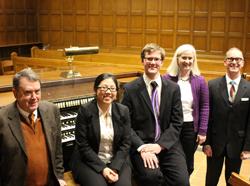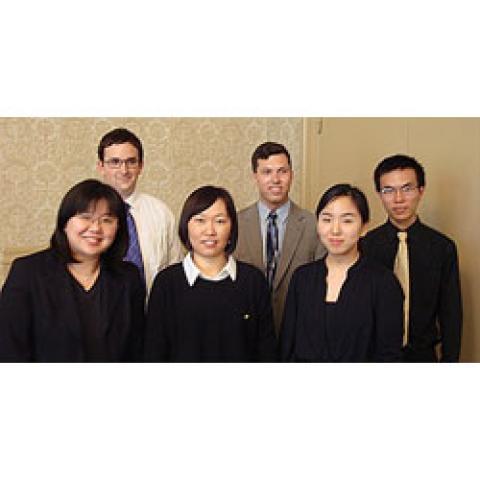
Eight organ and sacred music majors at the University of Michigan participated in the 2015 Schoenstein Competition in the Art of Organ Accompaniment on February 25, 2015 at the First Presbyterian Church of Ann Arbor. The competition was made possible through a generous grant from Jack M. Bethards, president and tonal director of Schoenstein & Co., Organ Builders, San Francisco, California.
Phillip Radtke, a graduate student in sacred music, was awarded the first prize of $1,000. Stephanie Yu, a doctoral student in organ performance, received the second prize of $500. The competition was judged by Marilyn Biery, Edward Maki-Schramm, and David Wagner.
The jury evaluated the competitors’ artistic use of the Schoenstein organ at First Presbyterian in a variety of organ accompaniments, including hymns, a vocal solo sung by University of Michigan graduate student Mysti Hawkins, and choral anthems performed with the Chancel Choir of First Presbyterian Church, Tom Granum, director.
Left to right: David Wagner, Stephanie Yu (2nd prize), Phillip Radtke (1st prize), Marilyn Biery, Edward Maki-Schramm





